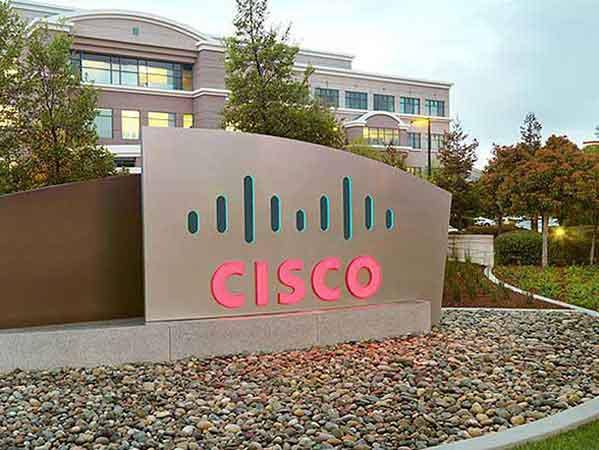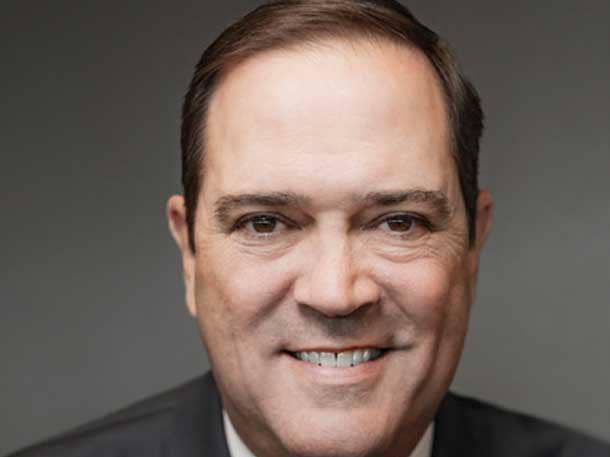What To Expect From Cisco’s Q4 Earnings As Supply Chain Issues And Revenue Declines Loom
The networking giant was seemingly harder hit by supply chain issues and other macro issues compared to competitors such as Arista Networks, Juniper Networks, and Extreme Networks. Here’s what to look for during Cisco’s Q4 fiscal quarter of 2022.

A Challenging Fiscal 2022
Nearly every industry is running up against tremendous supply chain challenges and shortages, but Cisco Systems was hard hit during its most recent fiscal Q3 2022 quarter due to some unexpected events — namely, Russia’s war on Ukraine and COVID-19-related closures in China, in addition to the global supply chain crisis. As such, the networking giant is forecasting revenue declines for its next and final quarter of the year, due to drop on Wednesday.
The San Jose, Calif.-based company disappointed investors in May after offering a weaker than expected guidance. For fiscal Q3 2022 which ended April 30, Cisco’s revenue stayed relatively flat at $12.83 billion compared to $12.80 in the year-ago quarter. At the same time, however, Cisco noted record-breaking customer demand and software and product order backlog.
“While the quarter clearly didn’t play out exactly as expected, demand remains solid and the fundamentals of our business remains strong,” said Cisco Chairman and CEO Chuck Robbins during the company’s most recent earnings call in May.
Investors say that Cisco has been facing more headwinds than its networking peers, including Arista Networks, Juniper Networks, and Extreme Networks as the company gets set to report its fiscal fourth quarter on Wednesday evening.
Here’s what to look for during Cisco’s fourth and final fiscal quarter of 2022.

Cisco CEO Chuck Robbins
Supply Chain Challenges
Arguably one of the biggest issues the company is facing right now is shortages and longer wait times for products and components due to supply chain constraints.
Robbins told CRN in June that the supply chain crisis won’t necessarily accelerate the everythin-as-a-service (XaaS) trend, something that Cisco has been hotly pursuing across its entire portfolio.
“Considering that a lot of our services have hardware built into the core service, I wouldn’t say that [supply chain issues] are a significant accelerant because I’ve actually had some conversations where some of our challenges in getting some of these things adopted is actually still supply chain and trying to get that stuff out there,” Robbins said in an exclusive interview. “I think [XaaS] is not immune to supply chain challenges, unfortunately. For pure SaaS offers, it’s obviously a different story.”
Cisco’s total annual recurring revenue (ARR) was up 11 percent year-over-year in Q3 2022, to $21.9 billion, which fueled an all-time high backlog of well over $15 billion, up 10 percent sequentially and up 130 percent year over year. Cisco’s software backlog is growing 80 percent year over year. Product ARR growth climbed 18 percent compared to Q3 2021.
Robbins said that there’s a $2 billion in software backlog because that software is connected to a piece of hardware. That revenue can’t be recognized until the hardware ships. Once the supply chain challenges start to clear, the company expects normalized software growth rates that will be driven by renewals in fiscal year 2023 and subscription-based enterprise wireless and data center networking offerings.

Software and Subscriptions
Robbins in May said that despite macro pressures and headwinds, Cisco is continuing to make progress on its business transformation to software and subscriptions. During Cisco’s fiscal third quarter, 83 percent of its software revenue was subscription-based, up 1 percentage point from last year’s Q3 result.
Despite the 10 percent uptick in software backlog sequentially, total software revenue was $3.7 billion during Cisco’s fiscal Q3 2022, a decrease 3 percent year over year, which would have been 5 points higher if not for the shorter fiscal third quarter and the War on Ukraine, according to Cisco. Subscription revenue was $5.5 billion during the quarter, a decrease of 5.5 percent for the same reasons.

Demand At An All-Time High
Despite flat revenues last quarter and predicted future declines, Robbins said that demand for Cisco products and services was not an issue. However, the company’s results are still being pressured by the Russia / Ukraine situation and the impact of COVID lockdowns in China.
Cisco’s fiscal Q3 was only the second miss on the top line in the past five years, although two of those misses were in the past three fiscal quarters, according to Seeking Alpha.
Cisco’s product order growth climbed only 8 percent year over year in Q3 following three consecutive quarters of more than 30 percent order growth. While still an increase, Cisco attributed the single-digit increase to a slightly shorter Q3 2022 — the third quarter of the company’s fiscal 2022 had 13 weeks compared with 14 weeks in the third quarter of fiscal 2021, as well as to Russia’s invasion of Ukraine.
Cisco’s product revenue, on the other hand, climbed 13 percent year over year and service revenue grew 3 percent during the third quarter. “This momentum reaffirms the critical role we play in our customer’s futures,” Robbins said in May. “The technology that [customers] are adopting from Cisco is driving their agility, allowing them to move at greater speeds, and allowing them to deliver differentiated experience for their customers.”

Overall Revenues
Cisco said during its Q3 2022 earnings call in May that it expects revenue to decline between one and five percent during Q4.
Wall Street is expecting sales of $12.78 billion, a nearly 2.7 percent decline compared to last year’s fiscal Q4 result. Non-GAAP EPS of 82 cents are expected, which would be down more than 2.2 percent year over year. It is worth noting that Cisco has not missed on the adjusted bottom line in the past five years, although it only beat by a penny per share in 10 of those quarters, according to Seeking Alpha.

Management Changes
Todd Nightingale (pictured), senior vice president and general manager of Cisco’s Enterprise Networking and Cloud Business and one of the tech giant’s executive leaders, revealed earlier this month that he’d be jumping to edge cloud company Fastly Inc., as the company’s new CEO effective Sept. 1.
Nightingale joined Cisco in 2012 when the company acquired Meraki. Previously, he served as senior vice president and general manager of Cisco’s Meraki business and quickly climbed the ranks within Cisco where he’s been managing business strategy and development efforts for Cisco’s multibillion-dollar networking portfolio.
Cisco, as a result, announced in August it was combining its Enterprise Networking and Cloud division with the Mass-Scale Infrastructure Group, which will be led by Jonathan Davidson, executive vice president and general manager of Cisco’s Mass-Scale Infrastructure group. The combination will give Cisco a unified vision for end-to-end networking, the company said. It is yet to be seen whether Robbins will comment on the new structure during the company’s earnings call on Wednesday.
“At Cisco, we always want the best for our teams, our people, and their continued growth in their careers. We are grateful for [Nightingale’s] many contributions to Cisco and congratulate him as he takes on a new opportunity as a CEO of another company in an adjacent market,” a Cisco spokesperson told CRN earlier this month.